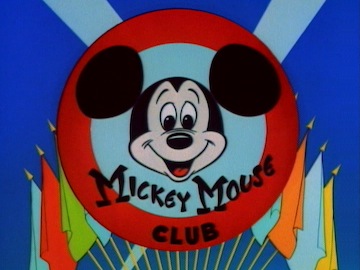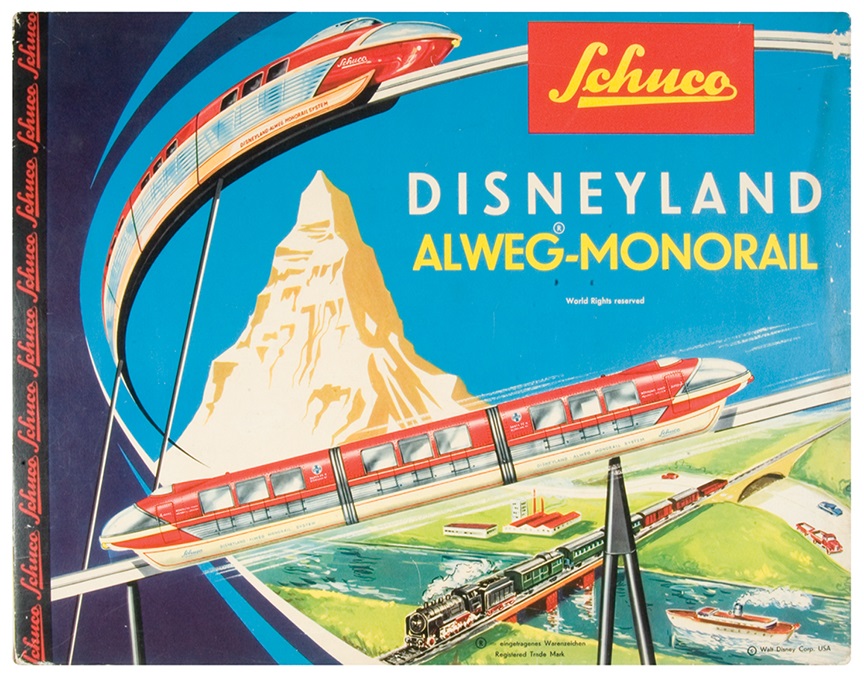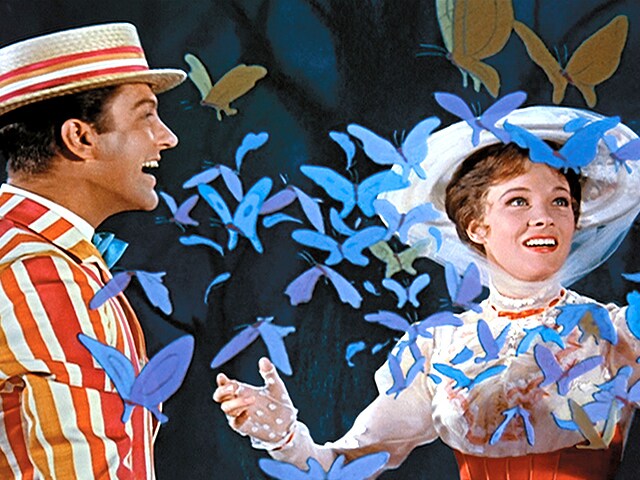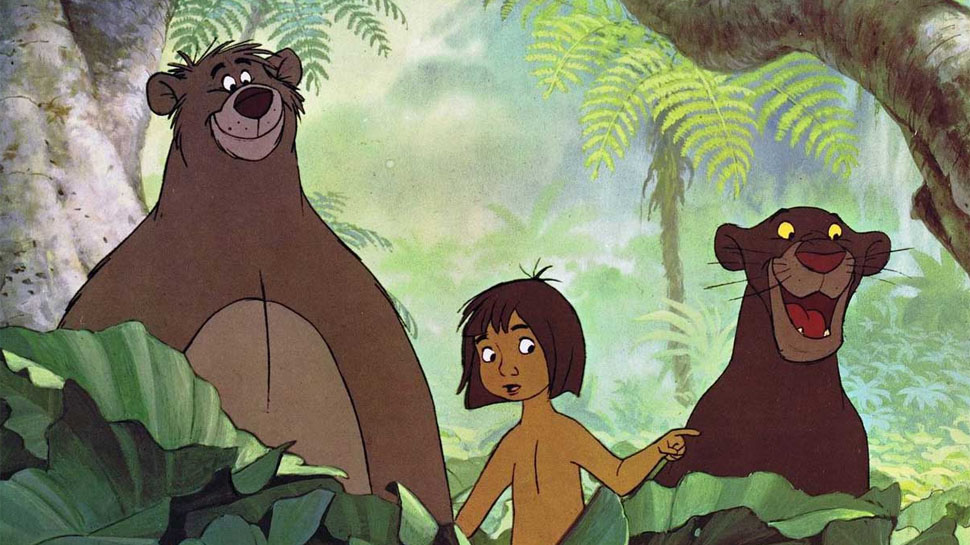On October 16, 2023, The Walt Disney Company celebrates its 100th birthday. What started with a few short cartoons has grown into one of the largest entertainment conglomerates in the world. Disney has produced a plethora of live-action and animated movies and television shows, comics, books, and games over that time. The company has Disney-themed parks all over the world, annual fan club events, cruise lines, and in recent years, it has purchased other entertainment juggernauts like Star Wars and Marvel Entertainment.
Here we present the first half of a comprehensive timeline that chronicles the biggest moments in Disney’s history to the first Disney on Parade. (The second half of the timeline will be presented in two weeks, following our coverage of New York Comic Con.)
June 24, 1893
Roy Disney is born.
December 5, 1901
Walt Disney is born.
May 1920
Milton Feld contracts with Walt Disney to produce 12 short “Laugh-O-Grams” cartoons for the Newman theater chain. These first “Lafflets” are essentially animated editorial cartoons, comically commenting on such issues as the condition of the Kansas City police force.
May 23, 1922
Walt Disney incorporates Laugh-O-Gram Films, Inc., opening a studio in Kansas City, MO. The studio will produce a series of fairy tale parodies along with the live-action/animation combination Alice’s Wonderland. Disney himself and longtime associate Ub Iwerks act as lead animators. Young Virginia Davis performs in the live-action role of Alice.
May 14, 1923
Walt Disney opens negotiations with New York film distributor Margaret Winkler in regards to Alice’s Wonderland and a subsequent Alice Comedies series.
October 16, 1923
Operating under the Disney Bros. name, Walt and Roy Disney sign a final contract with Margaret Winkler. The Alice series begins production at the Disneys’ new Hollywood studio.
April 1, 1924
Alice’s Spooky Adventure premieres. It introduces Julius the Cat, Disney’s first recurring cartoon star.
June 1924
Ub Iwerks joins the staff in Hollywood, leading to an upgrade in both the studio’s animation quality and the popularity of the Alice series.
March 24, 1925
Alice Solves the Puzzle premieres. It introduces Pegleg Pete (originally Bootleg Pete), the oldest Disney character still active today. Originally featured as a bear, the villainous Pete would become a cat in 1928.
January 1927
Under producer Charles Mintz, the Disney studio develops the new character of Oswald the Lucky Rabbit for Universal Pictures.
July 4, 1927
Premiere of Trolley Troubles, the second produced and first released Oswald cartoon.
February 1928
Charles Mintz gives Disney the choice of producing the Oswald cartoons at a lowered budget or ending his association with the character. Disney chooses the latter, after which Disney and Iwerks create Mickey Mouse.
May 15, 1928
Plane Crazy, the first produced Mickey Mouse cartoon, is given a sneak preview at a Sunset Boulevard theater. Minnie Mouse and Clarabelle Cow also debut in the cartoon.
November 18, 1928
Steamboat Willie, the third produced Mickey Mouse cartoon and the first with sound, premieres at the Colony Theatre. Pat Powers’ Celebrity Pictures handles distribution and provides sound with its Cinephone system.
June 1929
Sneak preview of the first Silly Symphony cartoon, The Skeleton Dance, at Los Angeles’ Cathay Circle Theatre.
June 28, 1929
Release of The Plowboy, introducing Horace Horsecollar, Mickey’s egotistical barnyard pal.
January 13, 1930
The New York Mirror publishes the first Mickey Mouse daily newspaper comic strip. It is written by Walt Disney, penciled by Ub Iwerks, and inked by Win Smith.
January 21, 1930
Ub Iwerks leaves the Disney studio. Walt Disney buys out Iwerks’ 20% share in the company.
February 1930
Columbia Pictures takes over distribution of Disney cartoons.
May 5, 1930
Floyd Gottfredson takes over art chores and, shortly after, plotting of the Mickey Mouse daily comic strip. He will continue work on the strip in various capacities until 1975.
September 5, 1930
Premiere of The Chain Gang, a Mickey Mouse short featuring two identical prison bloodhounds in a supporting role. The hounds mark the first use of what would become the Pluto character design.
November 1930
The first Disney publications appear: the paperback Mickey Mouse Book from Bibo and Lang and the hardback Mickey Mouse Annual #1 from English publisher Dean and Son. (The Annual is often misdated at 1931, but was actually published in time for the 1930 holiday season.)
January 10, 1932
Mickey Mouse appears in his first Sunday newspaper comics color half-page. It is accompanied by the Silly Symphony Sunday half-page, which will feature such characters as Bucky Bug and José Carioca over the years.
May 12, 1932
Mickey’s Revue is released. It introduces Dippy Dawg, the hayseed character soon to be renamed Goofy.
Summer 1932
United Artists takes over distribution of Disney cartoons.
July 1, 1932
Walt and Roy Disney contract with advertising agent Herman Kay Kamen, making him the company’s chief licensing representative.
July 30, 1932
Flowers and Trees is released. This Silly Symphony is Disney’s first color cartoon, and the first color cartoon ever to use the three-strip Technicolor process.
November 15, 1932
An art school is formed to train animators at the Disney studio.
November 18, 1932
Disney wins his first two Oscars. The Academy Award for Short Subjects, Cartoons, is won by Flowers and Trees. A special additional Academy Award is given to Disney for the creation of Mickey Mouse. Parade of the Award Nominees, a promotional short, premieres at the Academy Award ceremony. It features the first color animation of Mickey Mouse.
December 26, 1932
Topolino, the first Disney periodical, appears on Italian newsstands courtesy of Italian publisher Nerbini. Topolino initially contains stories and illustrations created entirely in Italy. Several months later it begins to reprint American Disney newspaper comics as well.
January 1933
Kay Kamen and Hal Horne introduce Mickey Mouse Magazine, the first American Disney periodical. Its first incarnations are movie theater and dairy giveaways. In summer 1935 it will become a standard newsstand publication.
May 27, 1933
The Silly Symphony Three Little Pigs is released, featuring the first appearances of the title characters and of Zeke, the Big Bad Wolf. Three Little Pigs will go on to win an Academy Award.
June 9, 1934
The Silly Symphony The Wise Little Hen premieres, introducing Donald Duck.
February 8, 1936
Mickey Mouse Weekly is issued in England by Willbank Publications. Similar to Topolino in format, it features a mix of locally produced comics (not all Disney-related) and American reprints.
January 9, 1937
Release of Don Donald, introducing Donna Duck and Donald’s famous car. Donald’s girlfriend would be renamed Daisy in 1940; the car, soon to receive its famous 313 license plate, remains a comics’ icon today, with model kits sold by various European licensees.
May 15, 1937
“Donald and Donna,” the first long Donald Duck comic book story, begins serialization in Mickey Mouse Weekly. It is an entirely British production, drawn by William Ward.
December 21, 1937
Snow White and the Seven Dwarfs premieres. It is the first American animated feature film.
December 30, 1937
Paperino Giornale, the first comic book named for Donald Duck, begins weekly publication in Italy. The first issue begins serialization of Federico Pedrocchi’s Paolino Paperino e il Mistero del Marte (Donald Duck and the Secret of Mars), the first extended length Disney comic book story to be created in Italy.
May 20, 1939
The Mickey Mouse daily strip begins serializing “Mickey Mouse Outwits the Phantom Blot,” plotted and penciled by Floyd Gottfredson, scripted by Merrill de Maris, and inked by Ted Thwaites and Bill Wright. The story introduces the Phantom Blot, Gottfredson’s most important creation and the second most important Mickey villain after Pegleg Pete.
February 7, 1940
Pinocchio premieres.
April 2, 1940
Walt Disney Productions’ initial public offering.
October 1940
Mickey Mouse Magazine becomes Western Publishing’s Walt Disney’s Comics and Stories, the first modern format Disney comic book. The earliest issues are mostly devoted to newspaper strip reprints.
November 12, 1940
Fantasia premieres.
February 27, 1941
Disney wins Academy Awards for Music, Best Song (for When You Wish Upon a Star) and Music, Best Score (for Pinocchio).
Summer 1941
Western Publishing’s Four Color Comics (Series I) 13 features “The Reluctant Dragon,” an animated featurette adapted to comics by Irving Tripp. This is the first American comic story to be produced exclusively for a comic book.
July 1942
Western Publishing’s Four Color Comics (Series II) #9 features “Donald Duck Finds Pirate Gold,” written by newspaper strip scripter Bob Karp and drawn by Donald cartoon storymen Carl Barks and Jack Hannah. “Pirate Gold” marked the start of Barks’ lifetime association with Duck comic books.
January 1, 1943
Release of Der Fuehrer’s Face. This wartime cartoon, in which Donald Duck dreams of leading a miserable life in Nazi Germany, will go on to win Donald his first and only Academy Award.
April 2, 1943
Release of Private Pluto, introducing Chip ‘n’ Dale.
July 18, 1944
El Pato Donald y Otras Histor-ietas, the first Brazilian Disney comic book, begins publication from Editorial Abril. In time, Abril will become one of the foremost producers of Disney comics material, much of it centered around locally popular Disney star José Carioca.
January 1945
Roy Disney becomes President of Walt Disney Productions.
December 1947
Western Publishing’s Four Color Comics (Series II) #178 features “Donald Duck’s Christmas on Bear Mountain,” written and drawn by Carl Barks. The story introduces Uncle Scrooge McDuck, Barks’ most important creation and the second most important Duck character after Donald himself.
January 1948
Walt Disneys Comics and Stories #88 introduces Donald’s lucky cousin Gladstone Gander, another legendary Carl Barks creation.
March 20, 1948
“Zip-A-Dee-Doo-Dah,” a hit tune from Song of the South, wins the 1947 Academy Award for Best Song.
August 31, 1948
Mickey Mouse Park, named in an internal memo, circulates as the initial concept for what will become Disneyland Park.
September 1948
Kalle Anka & C:o, a Swedish version of Walt Disney’s Comics and Stories, is issued by what will become the Egmont Publishing Group. In time, from its headquarters in Copenhagen, Denmark, Egmont will become another of the foremost producers of Disney comics material.
April 1949
Italy’s Topolino comics magazine changes formats to become a thick digest-sized comic. In its first year, Topolino digest features the Italian-made Dante parody L’Inferno di Topolino (Mickey’s Inferno). In the 1950s and 1960s, a golden age of original Italian comics production will begin, under creators such as Romano Scarpa, Guido Martina and Giorgio Cavazzano.
October 1949
The Walt Disney Music Company is formed.
March 4, 1950
Cinderella is released in theaters.
July 19, 1950
Release of Treasure Island, Disney’s first purely live action feature film. The movie stars Bobby Driscoll as Jim Hawkins and Robert Newton in a famous performance as Long John Silver.
December 25, 1950
One Hour in Wonderland, the first Disney TV special, airs on NBC.
September 14, 1951
Alice in Wonderland debuts in theaters.
November 1951
Walt Disney’s Comics and Stories #134 introduces the Beagle Boys, creations of Carl Barks and the Disney duck characters' most famous recurring foes.
May 1952
Walt Disney’s Comics and Stories #140 introduces Gyro Gearloose, Donald Duck’s inventor friend and another of Carl Barks’ creations.
October 1952
Donald Duck, a Dutch version of Walt Disney’s Comics and Stories, is issued by what will become the De Geillustreerde Pers. In time, GP (today Sanoma) will become another of the foremost producers of Disney comics material.
December 16, 1952
Walt Disney Inc. is formed to develop Disneyland.
1953
Buena Vista Distribution Company is established as the Disney studio’s self-managed distribution firm.
April 1954
Walt announces that Disneylandia (as it was called early on) would open in July 1955. ABC television executives suggest the name change to Disneyland.
July 21, 1954
Ground broken for Disneyland.
October 27, 1954
Disneyland TV show, Disney’s classic one-hour variety series, debuts on ABC.
March 30, 1955
20,000 Leagues Under the Sea wins Academy Awards for Art Direction and Visual Effects.
July 18, 1955
Disneyland opens to the public.
October 3, 1955
The Mickey Mouse Club begins on ABC, introducing the Mouseketeers.
1958
Disneyland TV show becomes Walt Disney Presents.
January 29, 1959
Sleeping Beauty premieres in theaters.
June 14, 1959
Disneyland monorail begins operation.
September 24, 1961
Walt Disney Presents becomes Walt Disney’s Wonderful World of Color on NBC.
December 1961
Western Publishing’s Uncle Scrooge #36 introduces Magica De Spell, the “saucy sorceress” and second most famous nemesis of the Disney ducks.
1962
Disney initiates the Overseas Comics Program: in-house Burbank production of extra comic book stories in English, exclusively for publication abroad. The Overseas Program’s most popular creation is Donald’s cousin Fethry Duck.
1963
Central Florida is chosen as the location for what will become Walt Disney World.
April 22, 1964
Four Disney exhibits are showcased at New York World’s Fair.
August 27, 1964
Mary Poppins premieres.
1964
Walt Disney begins developing concepts for what will become EPCOT Center at Walt Disney World.
April 5, 1965
Mary Poppins wins Academy Awards for Best Actress (Julie Andrews), Best Song (“Chim Chim Cher-ee”), Musical Score, Film Editing, and Special Visual Effects.
November 15, 1965
First public announcement of plans to build a new theme park in Florida.
February 4, 1966
Winnie the Pooh and the Honey Tree is released, introducing Disney’s versions of Pooh, Rabbit, Owl, Eeyore, Kanga and Roo. Tigger and Piglet, though not in the film, are still part of the ancillary marketing campaign, although the designs used for the two are markedly different from those later used in animation.
December 15, 1966
Walt Disney dies at age 65 from symptoms related to lung cancer. The recognition of his legacy consists of 48 Academy Awards and 7 Emmys. In lieu of Walt, Roy Disney is named company chairman, with Don Tatum as president and Card Walker as executive vice-president of operations.
October 18, 1967
Release of The Jungle Book, the last animated feature personally supervissed by Walt Disney.
December 20, 1968
Winnie the Pooh and the Blustery Day is released, introducing Disney’s definitive versions of Tigger and Piglet.
June 8, 1969
Topolino #706 features “Paperinik il Diabolico Vendicatore” (“The Diabolical Duck Avenger”), written by Elisa Penna and drawn by Giovan Battista Carpi. The comic story introduces Paperinik (Duck Avenger), Donald Duck’s secret superhero identity.
December 25, 1969
Disney on Parade debuts in Chicago.

























